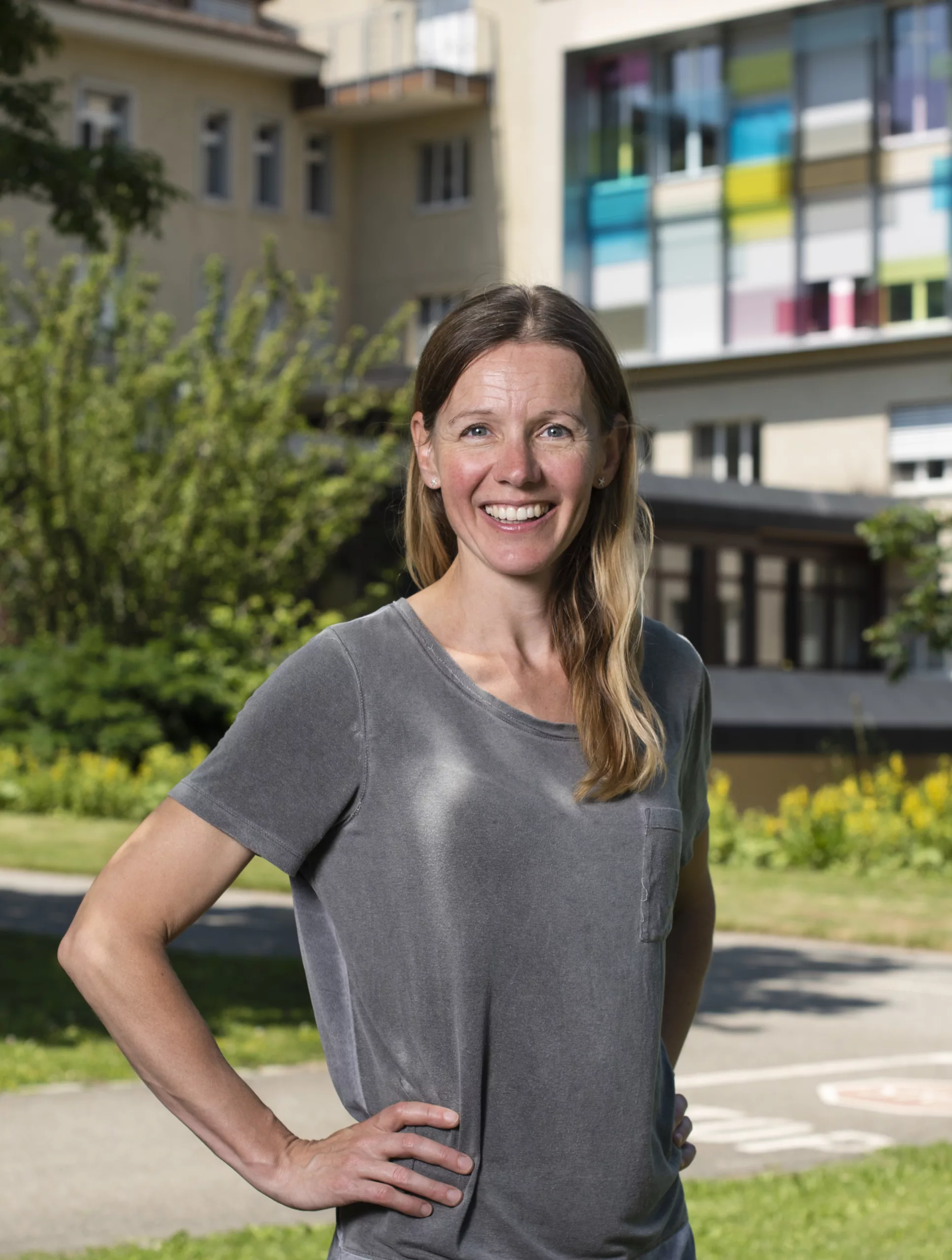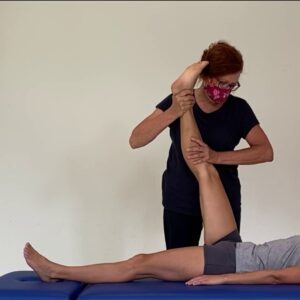EXPERT
Integration of neurodynamics into neurorehabilitation (INN®) Expert 2: Neurodynamic tests
The INN® neurodynamic tests allow you to clinically test the nerves.
Where do the observed limitations come from? The neurodynamic tests provide you with elementary building blocks for your clinical reasoning!
Course content
In this course, you will learn how to use neurodynamic tests in a targeted and safe manner - on healthy people, on people with neurological impairments and as a basis for movement analysis in everyday clinical practice. You will adopt the various positions yourself and learn how they affect you. By practicing on models, you will increase your confidence in handling them, get to know the range of possible reactions and can later use the tests on people with neurological impairments and children. Another focus is on the palpation of peripheral nerves in order to familiarize yourself with their course and detect possible sensitive areas. This provides important information for interpreting the test findings.
Learning objective:
After completing this course, you will be able to apply neurodynamic tests specifically for neurorehabilitation and classify findings clinically. You will understand the anatomical principles, know the test rules and be able to respond sensitively to the reactions of severely affected patients or people without reliable verbal feedback.
Note
This is part 2 of the INN® Basic Digital Course. This consists of four courses:
Expert 1: INN® Basics, Development & Application (4 h)
Expert 2: INN® Neurodynamic Tests
Expert 3: INN® Further Aspects
Expert 4: INN® Clinical Reasoning Process
With the completion of all four courses, you will receive the certificate for the basic course INN® Integration of Neurodynamics in Neurorehabilitation. This certificate entitles you to participate in INN® practical courses.
Course part 1 | Test basics
- Introduction and goals
- Prerequisite
- Test rules on the model
- Test rules for neurological patients
- Knowledge check
Course part 2 | Tests of the lower extremities and trunk
- Straight Leg Raise (SLR): Anatomy and implementation on the model
- Introduction motion diagram
- Straight Leg Raise (SLR) for patients
- Variants of the Straight Leg Raise (SLR)
- Introduction to palpation and nerves of the sacral plexus
- Prone Knee Bend (PKB): Anatomy and implementation on the model
- Prone Knee Bend (PKB) in patients
- Further variants of the Prone Knee Bend (PKB) and palpation
- Slump and Passive Neck Flexion (PNF)
- Quality criteria and minimal clinical difference
- Knowledge check
Course part 3 | Tests of the upper extremities
- Brachial plexus
- ULNT 1: Anatomy and test on the model
- ULNT 2b and 2b: Anatomy and testing on the model
- ULNT 3a and 3b: Anatomy and testing on the model
- ULNT adjustments for patients and variants
- Palpation and nerves of the brachial plexus and other tests
- Quality criteria and minimal clinically relevant difference
- Knowledge check
Course part 4 | Final test
Therapists from all areas
Doctors and physicians
Curative educators
Movement scientists
Anyone who works with people with a brain lesion and would like to know more about the relationship between structure, function, activity and independence.
360 minutes learning time
Handout included
available for 6 months from booking
Meet the teachers

Nora Kern, MSc PT, OMPT
In order to be able to analyze which structure should be given priority, we not only explain the tests, but also differentiation possibilities to other structures and adaptations to the special needs of people after a brain lesion and of children. I also use them together with other specific tests to rule out structural problems - as a prerequisite for being able to train at activity level. For those affected, the only important thing is whether their quality of life improves as a result of the treatment: that's why a re-assessment is essential, especially at the participation level.

Dr. Petra Marsico, PT
Learning the neurodynamic tests has already greatly enriched my way of thinking and my clinical reasoning about the movement behavior of children and adolescents with and without neurological diagnoses. Through the targeted use of the tests, I can treat children more precisely and work with them to develop the necessary freedom of movement (mobility) that promotes their independence and movement behavior.
Info video
INN Expert 2: Neurodynamic tests
Training points
and
Certificate
You will receive the following training points for this course

- German Association of Occupational Therapists (DVE): 8 points
- German Association of Physiotherapy (ZVK): 8 points

- Umbrella organization of medical-technical services (MTD): 8 teaching units*

- Ergoverband Schweiz (EVS): 6 points
- Physioswiss: 6 points
After completing the course, you will automatically receive a personal certificate that you can use as proof of your training
* Our confirmation of participation can be submitted to your professional association as part of an application for the MTD-CPD certificate.


